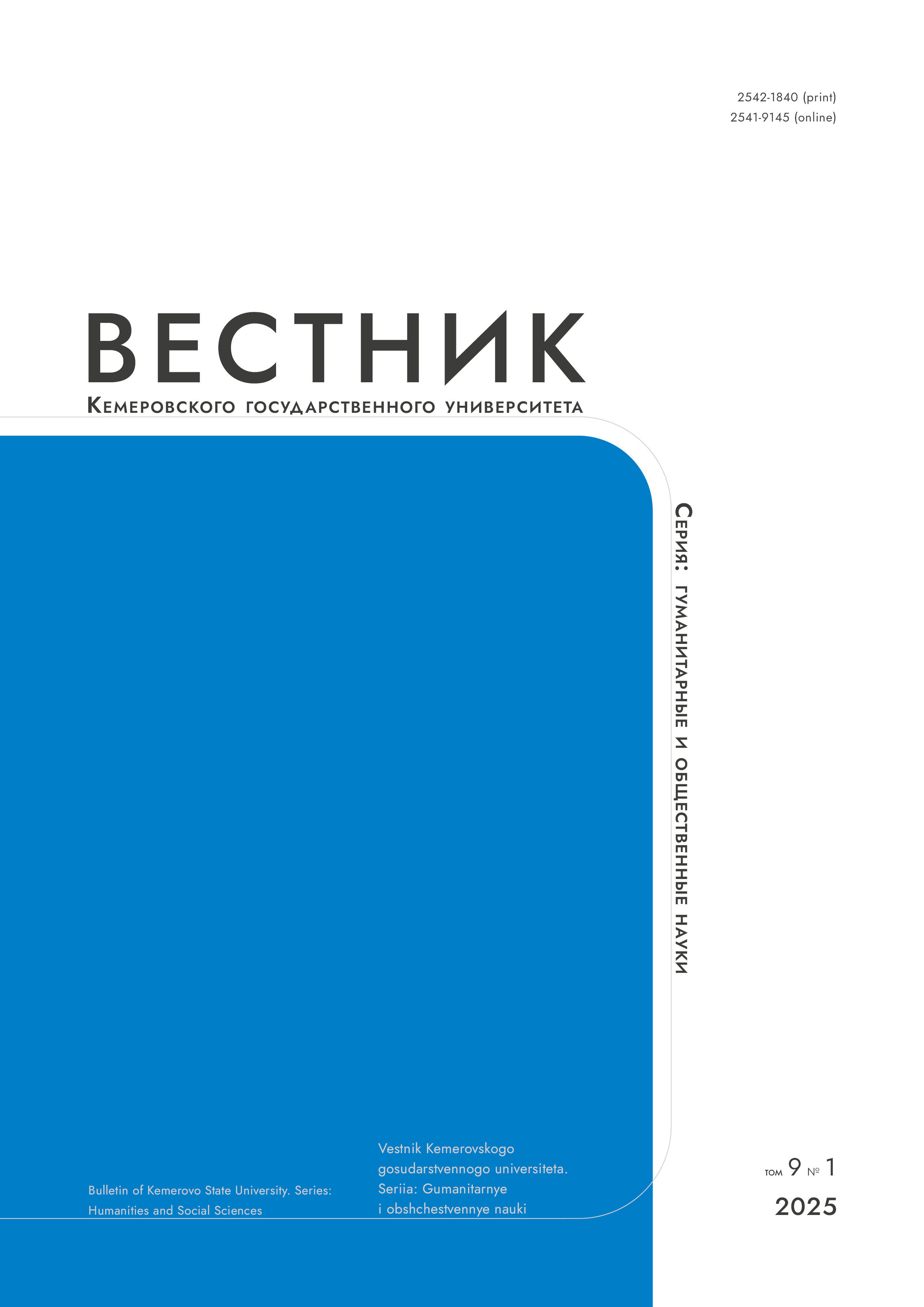Омск, Россия
Кемерово, Россия
Кемеровский государственный университет (кафедра акмеологии и психологии развития, профессор)
с 01.01.2003 по 01.01.2025
Кемерово, Россия
Кемерово, Россия
Цель – выявить психологические и социальные факторы развития свойств внимания в младшем школьном возрасте. Предмет исследования – взаимосвязь личностных факторов, характеристик материнско-детских отношений и средовых факторов со свойствами внимания младших школьников (10–11 лет). В исследовании приняли участие 54 обучающихся и их матери. Для измерения концентрации, устойчивости и переключаемости внимания детей использовалась «Корректурная проба». Личностные особенности младших школьников изучались при помощи теста Г. Айзенка, направленного на определение экстраверсии и нейротизма, и разработанной О. Ю. Гроголевой анкеты для анализа уровня мотивации школьника. Матери обучающихся заполняли опросную методику «Взаимодействие родитель-ребенок» И. М. Марковской, позволяющую оценить характеристики материнско-детских отношений, и анкету, направленную на получение информации о режиме дня ребенка. Для обработки данных применялся коэффициент корреляции Спирмена, критерий φ – угловое преобразование Фишера и факторный анализ. Статистическая обработка результатов показала, что устойчивость внимания имеет наибольшее число взаимосвязей как с внутриличностными, так и с социально-психологическими факторами. Значение для развития свойств внимания у младших школьников имеют эмоциональная устойчивость, экстраверсия, характеристики учебной мотивации детей. Наиболее значимыми параметрами материнско-детских отношений оказались тревожность матери, ее удовлетворенность отношениями с ребенком и эмоциональная близость с ним. Средовые факторы, в частности режим дня младшего школьника, также вносят вклад в развитие свойств внимания.
свойства внимания, младший школьный возраст, устойчивость, переключаемость, концентрация, материнско-детские отношения, свойства темперамента, учебная мотивация, режим дня
1. Хомская Е. Д. Нейропсихология. 4-е изд. СПб: Питер, 2005. 496 с.
2. Diamond A. Executive functions. Annual Review of Psychology, 2013, 64(1): 135-168. https://doi.org/10.1146/annurev-psych-113011-143750
3. Гальперин П. Я. К проблеме внимания. Доклады АПН РСФСР. 1958. № 3. С. 33-38.
4. Zimmermann P., Gondan M., Fimm B. KiTAP - Test of Attentional Performance for Children. Herzogenrath: Psytest, 2005, 79. URL: https://www.psytest.net/en/test-batteries/kitap/demo-version (accessed 14 Oct 2022).
5. Vuontela V., Carlson S., Troberg A.-M., Fontell T., Simola P., Saarinen S., Aronen E. T. Working memory, attention, inhibition, and their relation to adaptive functioning and behavioral / emotional symptoms in school-aged children. Child Psychiatry & Human Development, 2013, 44(1): 105-122. https://doi.org/10.1007/s10578-012-0313
6. Cohen R. A. Focused and sustained attention. The neuropsychology of attention. 2nd ed. N. Y.: Springer, 2014, 89-112. https://doi.org/10.1007/978-0-387-72639-7_6
7. Zomeren A. H. van, Brouwer W. H. Clinical neuropsychology of attention. 1st ed. N. Y.: Oxford University Press, 1994, 250.
8. Fan J., McCandliss B. D., Sommer T., Raz A., Posner M. I. Testing the efficiency and independence of attentional networks. Journal of Cognitive Neuroscience, 2002, 14(3): 340-347. https://doi.org/10.1162/089892902317361886
9. Huizinga M., Dolan C. V., Molen M. W. van der. Age-related change in executive function: developmental trends and a latent variable analysis. Neuropsychologia, 2006, 44(11): 2017-2036. https://doi.org/10.1016/j.neuropsychologia.2006.01.010
10. Konrad K., Neufang S., Thiel C. M., Specht K., Hanisch C., Fan J., Herpertz-Dahlmann B., Fink G. R. Development of attentional networks: an fMRI study with children and adults. NeuroImage, 2005, 28(2): 429-439. https://doi.org/10.1016/j.neuroimage.2005.06.065
11. Tremolada M., Taverna L., Bonichini S. Which factors influence attentional functions? Attention assessed by KiTAP in 105 6-to-10-year-old children. Behavioral Sciences, 2019, 9(1). https://doi.org/10.3390/bs9010007
12. Trautmann M., Zepf F. D. Attentional performance, age and scholastic achievement in healthy children. PLOS ONE, 2012, 7(3). https://doi.org/10.1371/journal.pone.0032279
13. Malegiannaki A.-C., Metallidou P. Development of attentional functions in school-age: evidence from both traditional and computerized tasks. Journal of Educational and Developmental Psychology, 2017, 7(1): 42-51. https://doi.org/10.5539/jedp.v7n1p42
14. Zevenbergen A. A., Ryan M. M. Gender differences in the relationship between attention problems and expressive language and emerging academic skills in preschool-aged children. Early Child Development and Care, 2010, 180(10): 1337-1348. https://doi.org/10.1080/03004430903059292
15. Pérez-Edgar K., LoBue V., Buss K. A., Field A. P., LAnTs Team. Study protocol: longitudinal attention and temperament study. Frontiers in Psychiatry, 2021, 12. https://doi.org/10.3389/fpsyt.2021.656958
16. Posner M. I., Rothbart M. K. Temperament and brain networks of attention. Philosophical Transactions of the Royal Society B: Biological Sciences, 2018, 373(1744). https://doi.org/10.1098/rstb.2017.0254
17. Чаркова М. Л. Особенности развития свойств внимания под влиянием мотивации. Психологическая наука и образование. 2003. Т. 8. № 2. С. 26-33. EDN: https://elibrary.ru/HSRMKP
18. Dönmez M. U., İmamoğlu O. Comparison of attention levels in primary school students in terms of gender and physical activity. Asian Journal of Education and Training, 2020, 6(2): 256-260. https://doi.org/10.20448/journal.522.2020.62.256.260
19. Dilworth-Bart J. E., Khurshid A., Vandell D. L. Do maternal stress and home environment mediate the relation between early income-to-need and 54-months attentional abilities? Infant and Child Development, 2007, 16(5): 525-552. https://doi.org/10.1002/icd.528
20. Groot A. S., Sonneville L. M. J. de, Stins J. F., Boomsma D. I. Familial influences on sustained attention and inhibition in preschoolers. Journal of Child Psychology and Psychiatry, 2004, 45(2): 306-314. https://doi.org/10.1111/j.1469-7610.2004.00222.x
21. Belsky J., Fearon R. M. P., Bell B. Parenting, attention and externalizing problems: testing mediation longitudinally, repeatedly and reciprocally. Journal of Child Psychology and Psychiatry, 2007, 48(12): 1233-1242. https://doi.org/10.1111/j.1469-7610.2007.01807.x
22. Ruff H. A., Rothbart M. K. Attention in early development: themes and variations. N. Y.: Oxford University Press, 1996, 294.
23. Fearon R. M. P., Belsky J. Attachment and attention: protection in relation to gender and cumulative social-contextual adversity. Child Development, 2004, 75(6): 1677-1693. https://doi.org/10.1111/j.1467-8624.2004.00809.x
24. Hubbs-Tait L., Culp A. M., Culp R. E., Miller C. E. Relation of maternal cognitive stimulation, emotional support, and intrusive behavior during Head Start to children's kindergarten cognitive abilities. Child Development, 2002, 73(1): 110-131. https://doi.org/10.1111/1467-8624.00395
25. Razza R. A., Martin A., Brooks-Gunn J. Associations among family environment, sustained attention, and school readiness for low-income children. Developmental Psychology, 2010, 46(6): 1528-1542. https://doi.org/10.1037/a0020389





















